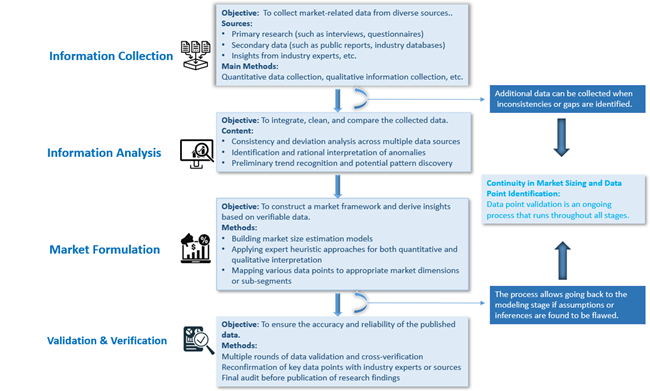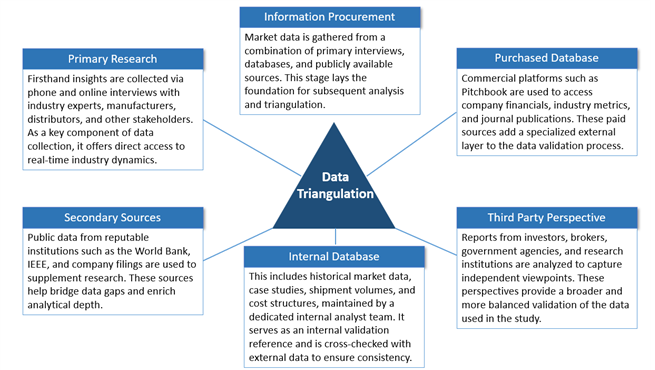AGV (Automated Guided Vehicle) is an automated
guided vehicle, which is mainly used for automatic logistics handling and
transportation. It transports items to designated locations through special
landmark navigation. Common guidance methods include magnetic strip guidance
and laser guidance. With the development of technology, it has been
incorporated into the mobile robot industry. With the continuous development of
the global economy, the trend of automated equipment replacing human labor
continues to advance, and the global market demand for AGV products is growing.
The AGV industry chain can be divided into three
links: upstream core components (including servo systems, sensors, intelligent
SoCs, control MCUs, reducers, housings/structural parts, etc.), midstream body
manufacturing (AGV mobile robot manufacturers), and downstream system
integration and application (such as intelligent logistics system integration,
which can be applied to automobiles, 3C, express e-commerce and other
industries). At present, body manufacturers can also provide some system
solution designs, and some downstream integrators also have the ability to
design and produce AGV carts. Body manufacturers generally do not penetrate
into upstream core components.
Note: Mobile robots in
this report include AGV and AMR. AMR--Autonomous Mobile Robot, that is,
autonomous mobile robots. AMR is similar to AGV, but it does not require
external infrastructure such as magnetic strips, rails, and QR codes.
According to LookWhole Insight, the global Automated Guided Vehicle market is projected to reach USD 4.71 Billion in 2024. It is expected to grow to USD 10.03 Billion by 2033, registering a compound annual growth rate (CAGR) of 8.75% during the forecast period (2025–2033).
Global Automated Guided Vehicle Market: Competitive Landscape
According to LookWhole Insight, global AGV competition landscape is undergoing a dual transformation of "technology localization" and "regional rebalancing": Europe and North America are sticking to the high-end market, while China is accelerating the replacement of foreign capital share and going to Southeast Asia with its policy and industrial chain advantages. The market is still a competitive market, and the industry concentration is increasing year by year. For example, in 2024, the concentration of China's mobile robot industry CR5 will exceed 50%. The Matthew effect is further evident, and the gap between manufacturers is gradually widening. As market competition intensifies, technological innovation and product differentiation will become the key to corporate competition.
Market Report Coverage & Segmentation
|
ATTRIBUTE |
Details |
|
|
Time Coverage |
Historical Year: 2020– 2024 Base Year: 2024 Estimated Year: 2025 Forecast Year: 2025 - 2033 |
|
|
Market Segmentation |
||
|
By Type |
Tow vehicle Unit load carrier Pallet truck Forklift truck Assembly line vehicles |
|
|
By Application |
Logistics & warehousing Assembly Packaging Trailer loading & unloading Raw material handling Others |
|
|
By Company |
Daifuku Co., Ltd. Toyota Industries Corporation KION Group AG Jungheinrich AG KUKA AG Murata Machinery, Ltd. SSI SCHAEFER AG Mitsubishi Logisnext Co., Ltd. Geek+ Hai Robotics Seegrid Corporation JBT Corporation Standard Robots Quicktron EK Robotics GmbH Scott Technology Ltd. Oceaneering International, Inc. Siasun Robot & Automation Co., Ltd. Suzhou Casun Intelligent Robot Co., Ltd. Hyster-Yale Materials Handling, Inc. MEIDENSHA Corporation Kinco Automation Hikrobot Huari Technology CSG HUA XIAO |
|
|
By Region |
North America |
|
Report Framework and Key Highlights:
Market Dynamics: Identification of major market drivers, restraints, opportunities, and challenges.Trend Analysis: Examination of ongoing and emerging trends impacting the market.
Competitive Landscape: Detailed profiles and market positioning of major players, including market share, operational status, product offerings, and strategic developments.
Strategic Analysis Tools: SWOT Analysis, Porter’s Five Forces Analysis, PEST Analysis, Value Chain Analysis
Market Segmentation: By type, application, region, and end-user industry.
Forecasting and Growth Projections: In-depth revenue forecasts and CAGR analysis through 2033.
This report equips readers with critical insights to navigate competitive dynamics and develop effective strategies. Whether assessing a new market entry or refining existing strategies, the report serves as a valuable tool for:
Industry players
Investors
Researchers
Consultants
Business strategists
And all stakeholders with an interest or investment in the Automated Guided Vehicle (AGV) market.
Global Automated Guided Vehicle (AGV) Market: Segmentation Analysis and Strategic Insights
This section of the report provides an in-depth segmentation analysis of the global Automated Guided Vehicle (AGV) market. The market is segmented based on region (country), manufacturer, product type, and application. Segmentation enables a more precise understanding of market dynamics and facilitates targeted strategies across product development, marketing, and sales.
By breaking the market into meaningful subsets, stakeholders can better tailor their offerings to the specific needs of each segment—enhancing competitiveness and improving return on investment.
Global Automated Guided Vehicle (AGV) Market: Market Segmentation Analysis
The research report includes specific segments by region (country), manufacturers, Type, and Application. Market segmentation creates subsets of a market based on product type, end-user or application, Geographic, and other factors. By understanding the market segments, the decision-maker can leverage this targeting in the product, sales, and marketing strategies. Market segments can power your product development cycles by informing how you create product offerings for different segments.
Key Companies Profiled
Daifuku Co., Ltd.
Toyota Industries Corporation
KION Group AG
Jungheinrich AG
KUKA AG
Murata Machinery, Ltd.
SSI SCHAEFER AG
Mitsubishi Logisnext Co., Ltd.
Geek+
Hai Robotics
Seegrid Corporation
JBT Corporation
Standard Robots
Quicktron
EK Robotics GmbH
Scott Technology Ltd.
Oceaneering International, Inc.
Siasun Robot & Automation Co., Ltd.
Suzhou Casun Intelligent Robot Co., Ltd.
Hyster-Yale Materials Handling, Inc.
MEIDENSHA Corporation
Kinco Automation
Hikrobot
Huari Technology
CSG HUA XIAO
Market Segmentation by Type
Tow vehicle
Unit load carrier
Pallet truck
Forklift truck
Assembly line vehicles
Market Segmentation by Application
Logistics & warehousing
Assembly
Packaging
Trailer loading & unloading
Raw material handling
Others
Geographic Segmentation
North America: United States, Canada, Mexico
Europe: Germany, France, Italy, U.K., Spain, Sweden, Denmark, Netherlands, Switzerland, Belgium, Russia.
Asia-Pacific: China, Japan, South Korea, India, Australia, Indonesia, Malaysia, Philippines, Singapore, Thailand
South America: Brazil, Argentina, Colombia.
Middle East and Africa (MEA): Saudi Arabia, United Arab Emirates, Egypt, Nigeria, South Africa, Rest of MEA
Report Framework and Chapter Summary
Chapter 1: Report Scope and Market Definition
This chapter outlines the statistical boundaries and scope of the report. It defines the segmentation standards used throughout the study, including criteria for dividing the market by region, product type, application, and other relevant dimensions. It establishes the foundational definitions and classifications that guide the rest of the analysis.
Chapter 2: Executive Summary
This chapter presents a concise summary of the market’s current status and future outlook across different segments—by geography, product type, and application. It includes key metrics such as market size, growth trends, and development potential for each segment. The chapter offers a high-level overview of the Automated Guided Vehicle (AGV) Market, highlighting its evolution over the short, medium, and long term.
Chapter 3: Market Dynamics and Policy Environment
This chapter explores the latest developments in the market, identifying key growth drivers, restraints, challenges, and risks faced by industry participants. It also includes an analysis of the policy and regulatory landscape affecting the market, providing insight into how external factors may shape future performance.
Chapter 4: Competitive Landscape
This chapter provides a detailed assessment of the market's competitive environment. It covers market share, production capacity, output, pricing trends, and strategic developments such as mergers, acquisitions, and expansion plans of leading players. This analysis offers a comprehensive view of the positioning and performance of top competitors.
Chapters 5–10: Regional Market Analysis
These chapters offer in-depth, quantitative evaluations of market size and growth potential across major regions and countries. Each chapter assesses regional consumption patterns, market dynamics, development prospects, and available capacity. The analysis helps readers understand geographical differences and opportunities in global markets.
Chapter 11: Market Segmentation by Product Type
This chapter examines the market based on product type, analyzing the size, growth trends, and potential of each segment. It helps stakeholders identify underexplored or high-potential product categories—often referred to as “blue ocean” opportunities.
Chapter 12: Market Segmentation by Application
This chapter analyzes the market based on application fields, providing insights into the scale and future development of each application segment. It supports readers in identifying high-growth areas across downstream markets.
Chapter 13: Company Profiles
This chapter presents comprehensive profiles of leading companies operating in the market. For each company, it details sales revenue, volume, pricing, gross profit margin, market share, product offerings, and recent strategic developments. This section offers valuable insight into corporate performance and strategy.
Chapter 14: Industry Chain and Value Chain Analysis
This chapter explores the full industry chain, from upstream raw material suppliers to downstream application sectors. It includes a value chain analysis that highlights the interconnections and dependencies across various parts of the ecosystem.
Chapter 15: Key Findings and Conclusions
The final chapter summarizes the main takeaways from the report, presenting the core conclusions, strategic recommendations, and implications for stakeholders. It encapsulates the insights drawn from all previous chapters.






